How to Start Raising Rabbits for Beginners
How to Start Raising Rabbits for Beginners.
This is a guest post from my good friend, Leah. You can find out more about Lean and her blog at the end of this post. Enjoy, she really does a great job covering all the things you will need to know to get started raising rabbits!
Learning to raise rabbits can feel a bit overwhelming. But after you and I wrap up our little chat here you will be well on your way to becoming a pro. The key to learning anything new is to start with the basics rather than feeling like you need to learn everything all at once.
Slow and steady wins the race when learning how to start raising rabbits or any other animal.
Before You Buy Your Rabbits
You want to start off raising rabbits on the right foot. So here are some things you should think about before you get your heart set on a breed or buy your rabbits.
Goals For Your Rabbits
You might think I am a little silly for saying you should have goals when you are raising rabbits. But the truth is if you go at it with no plan at all or worse you just pick the breed you like. You could end up with a lot of different breeds and no real purpose to your rabbitry. Which leaves you with a hobby that literally eats away at your wallet.
There are a lot of options when it comes to raising rabbits and what you can do with them. So before you start “rabbit shopping” think about these things.
- What do you want to raise rabbits for? Do you want them for meat, wool, or fiber?
- Do you just want rabbits as a pet or use their poo for your garden?
- What about getting good enough quality to sell as show rabbits, to 4Hers, or as pets? This way you could use them to offset expenses.
Think of as many uses as possible from one breed you would want to raise.
Here is an example.
The angora (a big wooled rabbit) could provide you with wool for making yarn and knitting projects. You could buy good enough quality to sell as a show rabbit or to 4-H kids. You could sell babies as pets, and believe it or not, they are a meat rabbit. So that breed could cover all of the aspects of production you could even use their waste in your compost in gardening.
Don’t stress yourself out trying to do all of those things and make sure you do like the breed you raise.
Space Available
This next point you should think about is the space you have available. You could raise double if not triple the number of mini lops in the space that my french lops take up. So think about that as well. Do you like to have several or are you happy with just a few.
Think about the space for the cages or hutches themselves. You don’t want to have one cage on one side of the yard and two more on the other side of the house. That will look scattered and be a pain at feeding time.
Also, the space needed to raise babies is a lot more than just keeping a few single rabbits. Some letters are as small as 3 to 4 and some breeds can have as many as 12 to 15. If you plan to raise rabbits for meat you need to have the space to grow them out. While you don’t have to separate them all into their own cage they are going to fill out better if they don’t have to compete for food.
READ: CHOOSING THE BEST ANIMALS FOR YOUR HOMESTEAD
Rabbit Housing
Rabbit housing is more than just a cage. There are different aspects that go into having a healthy rabbitry.
Cage Sizes
These sizes are recommended by the ARBA in The Raising Better Rabbits and Cavies official guide book. If you have more space and are willing to get bigger cages then, by all means, go for it. There is no such thing as too big.
- Rabbits Under 6lbs – 18x24x12
- Over 6lbs & Under 11lbs – 24×26-36×18
- Over 11lbs – 24×36-48×18
One thing to keep in mind is how your rabbit moves. French lops tend to sit up on their behind and 18” tall is not going to cut it. So I like at least 24” if not 30 for my rabbits.
You can “smush” around these inches to make them work for the space you have. As long as you have the minimum amount of floor space you are good.
3 Key Things Your Rabbit Housing Needs
It can be tempting to want to shelter your rabbits from all the elements that can happen outside. But before you decide where to set up your rabbitry lets chat about a few things first.
Ventilation
Ventilation should be number one on your list for choosing your rabbitry space.
If the ventilation is not good enough you will see a spike in pneumonia (what we call sniffles in rabbits) as well as other health issues. The recommended airflow direction change is something like 10 changes per day. Obviously that is impossible to track.
That leads me to my next point that will be your clue as to if you have enough ventilation in your rabbitry.
Humidity & Temperature
If you walk to your rabbitry and you find it hard to breath then your rabbit does also. Humidity is an enemy to your rabbit, combine it with high temperatures and that is a deadly combination.
If the humidity is low rabbits can typically tolerate 80 degrees just fine.
If the temperature or humidity is higher then you are going to have to take extra measures to keep them cool. Things like hooking up fans so they have good airflow. (I even do this for my “outdoor” rabbitry) Freezing 2-liter bottles with water or ceramic slates for them to lay on will also help.
One of the key things I find is to give them their Frozen objects no sooner than 1 p.m. to help get them through the heat of the day. Don’t give it to them too soon or the bottle will melt and not be there when they need it most.
Choosing A Location
If you have a choice, putting your rabbitry under trees should be the best thing you could do. Trees are nature’s cooling system and they will do wonders keeping your hutches cool. My rabbitry is located under a canopy of trees and I can feel the difference as I walk down from our backyard into the shaded area. Shade from a building will do ok if that is all you have but the rabbits are still don’t protect from the heat quite as well.
Feeding
Feeding a rabbit can be a touchy subject in the rabbit community. If you don’t get anything else from what I have to say; hear this.
If it is working for you and your herd. Stick to it. If your animals are happy and healthy it’s none my business or Nosy Nelly’s business what you feed your animals or how you do it.
With that said let’s dive into rabbit feeding.
Amount To Feed
The amounts I am giving you are assuming that you are only feeding rabbit pellets to your rabbit and not supplementing with anything else.
With that said, the amount is going to vary, of course by breed, but also by the animal. A french lop can eat as much as two cups per day but I have a few who hardly eat half that. Rabbits are kind of like humans in their eating habits, they are all different in what they can eat and what shows up in their appearance.
Get more tips on feeding your rabbits here!
Not that a type A “tell me what to do” type person wants to hear this but you will be better off “eyeballing” it and watching the results rather than measuring it out. There are a number of reasons why rabbits might stop eating or eat less than they normally would. This will be your first clue that they are not feeling well or maybe they are just feeling “off”.
I will get to that later.
Single Rabbit
If you are not feeding anything else other than pellets, give them just enough that they can clean it up before the next feeding and also be ready and waiting for you. If they are never emptying their bowl then dial it back my the amount you see left in the bowl.
- Rabbits Under 3lbs – ¼ cup
- Rabbits over 3lbs but under 6lbs – ½ cup
- Over 6lbs & Under 11lbs – ¾ cup to 1 ¼ cup
- Over 11lbs – 1.5 – 2 cups
Please keep in mind these are just guidelines, not the rule so watch your rabbit and see what they eat. Energy levels and cold vs warm weather will also affect how much they eat.
Doe And Litter
Feeding a doe (female rabbit) and her litter is the only exception. Free feed is fine, however, you will still need to watch because babies will sit in the bowls and go to the bathroom while eating resulting in A LOT of feed waste. You may have to feed less and more often.
Ideal Nutrition In Pellets
I am going to keep this short and sweet. Without getting too confusing the ideal protein percentage in the feed is 16-18% and a fiber percentage of 16-21% in pelleted feed.
Why I Don’t Recommend Hay
This one shocks people but I do not recommend feeding hay to rabbits unless you are VERY careful about what is in it and there is NO moisture in it at all. The main reason for that is there are molds and dust that you cannot see in the hay that will cause your rabbits to have gut issues. I can not tell you how many times I have heard horror stories of multiple people saying they nearly lost her entire herd to bloat. The common denominator was they all fed hay. So you take that and do with it what you will but in my 17 years of raising rabbits, I have never lost a rabbit to bloat.
Today’s pellets are designed to be a full ration. Meaning there is no reason for you to substitute anything. The only way I would say it’s okay to feed hay as if you buy it from the pet store or your local Walmart or someplace that has it like that. Because it has been stored in a dry place and has been so well dried there is no chance that it would be able to grow mold.
But of course, that goes against the mindset of every Homesteader. When it comes to something like this, the choice is ultimately yours. Do what you feel is best and what is working for your herd. If you feel your rabbit needs more digestive assistance, try feeding Rosemary. This has been the best herb I have on hand. With the Woody stems and it’s perfect for aiding in digestion.
Common Issues In The Rabbitry
These are the top issues that you could run into raising rabbits and I wanted to make sure I covered them.
Flies Or Bugs In The Rabbitry
Flies are obviously an issue anywhere animals are raised. I am all about prevention rather than treatment. So here are the things that I do to keep flies out of the rabbitry. About every other week I take a flathead shovel and run it across the bottoms on the cages to get any of the turds that stick to the bottom off. It just happens with rabbits there is nothing you are doing wrong if you have a building under the wire. This works best if you wait until the turns are dry and it is the easiest way to clean the bottoms.
The next thing I do about twice a year is spread diatomaceous earth under the hutches and all around the walkways. And the other product that I love is Bronco horse spray. Spray it on the cage itself, not the rabbit. I don’t spray it directly on the rabbits because it’s not intended for an animal that grooms itself as much as rabbits do. While I think it’s safe if they get a little bit on them I wouldn’t coat them with it.
If you have a hutch then spray it on the frame or on all the open sides to create a barrier. The flies don’t want anything to do with that. This will last about three days or if it rains you should spray again.
What To Do When A Rabbit Stops Eating
Rabbits will stop eating for a number of reasons. Sometimes they’re just feeling a little bit off or it can be due to being in a new location. It can also be the stress of a rabbit show, travel, or even temperature swings. These are all reasons that rabbits will go off their feed and it can be hard to know exactly what caused it.
If they are eating less then they should for a day then don’t worry, but if they don’t eat all their feed for two or more days then you definitely need to do something about it.
There are a few herbs that I like to use that will get your rabbits to eat again. Lavender and Comfrey are my favorites. Both do wonders to bring back their appetite. Fresh is best but since that is not an option 365 days a year. Dried will work just fine. Make sure they are from an herb dealer not intended for food because they are often dried too hot and fast that will take away the medicinal properties.
Get more help on treating rabbits with herbs, here!
Digestion/Diarrhea treatment.
When a rabbit has digestion issues they are going to go down fast and hard. I always keep Rosemary and or Lavender on hand if I think something is up. The one thing that I love about herbs is that it is very hard to overdose a rabbit. So even if I just suspect they are not feeling well I give it to them anyway because I would rather be safe than sorry.
Let me share my own personal experience at how well lavender works. I had an intermediate aged doe that was having really bad diarrhea. I came out and found her cage messy and her hind legs looking just as bad of course my gut sank preparing for the worst. I knew I didn’t have much to lose so I went and got her two stems of fresh lavender about 4 inches long each and got her to eat them. The next morning she looked a little bit perkier but still was not back to normal. I gave her the same dose that day and then again that night. The next morning (day 2) she was completely back to normal the diarrhea was gone.
How To Use The Herbs
Give rosemary for bloat or scenarios where you don’t think “medicine” is needed.
Lavender does literally everything. It’s an antibiotic, antibacterial, Digestive aid… You name it, lavender does it.
Give about 5 inches of fresh herb 4 an 8 to a 10-pound rabbit.
Rabbits are some of the best animals to start with if you are thinking of having a hobby farm. And my favorite thing of all is they barely make any noise! So they are perfect city animals. Take it slow and work big. Don’t feel like you have to start with everything perfect. Have fun on your journey raising rabbits.
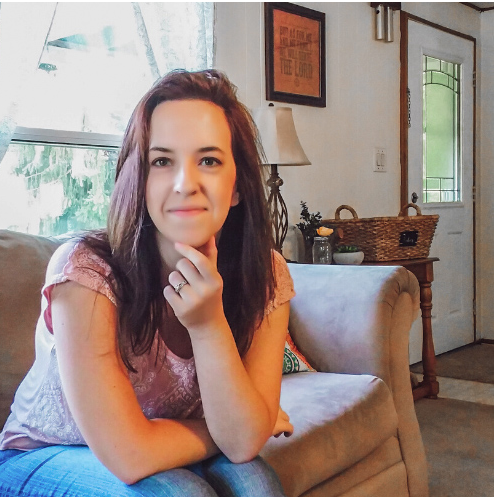
She is on a mission to equip rabbitry owners with practical rabbit care and how to keep their hobby from literally eating away at their wallets. You can find her at LeahLynch.com

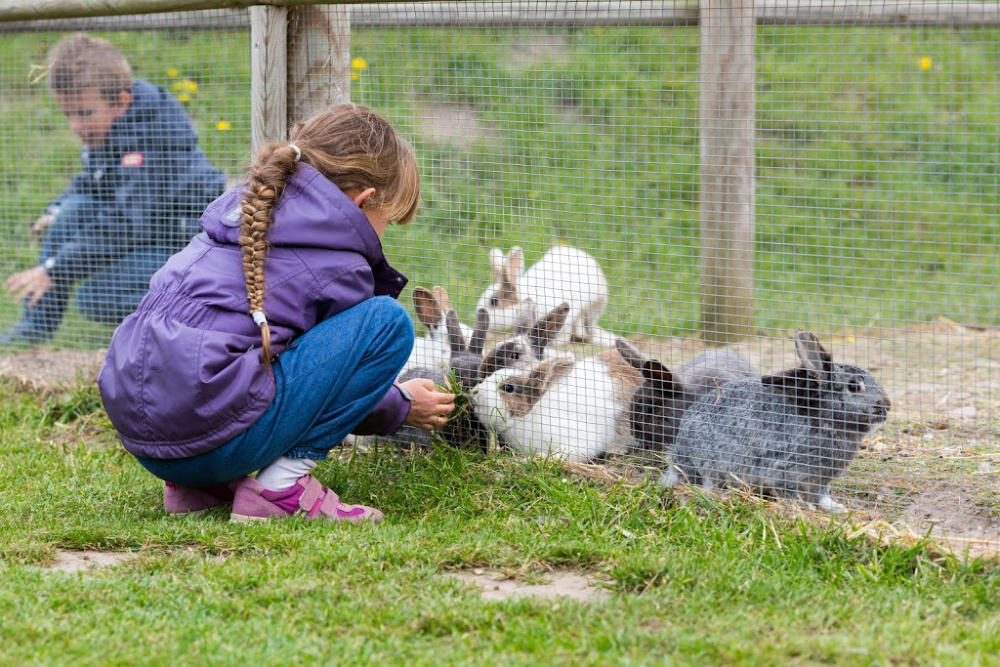
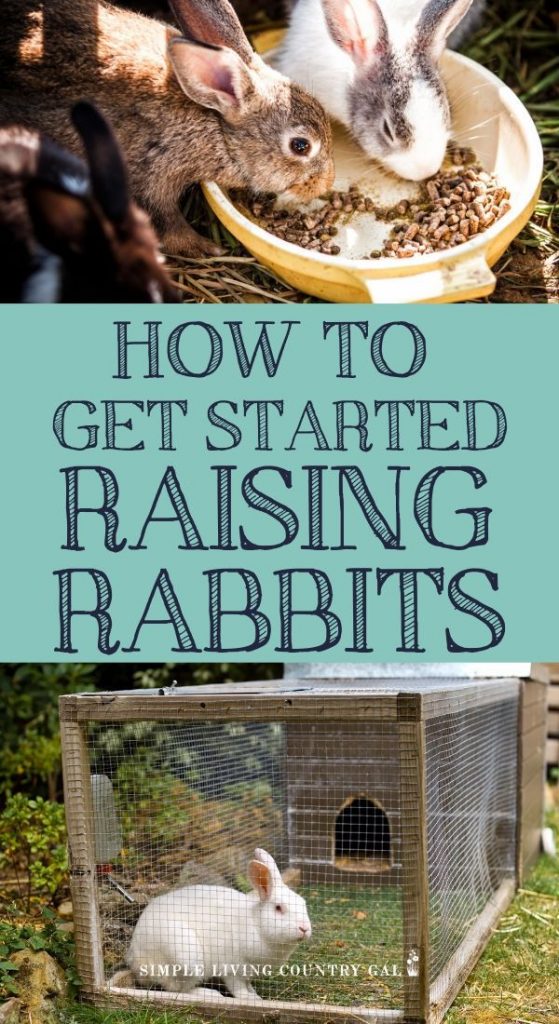
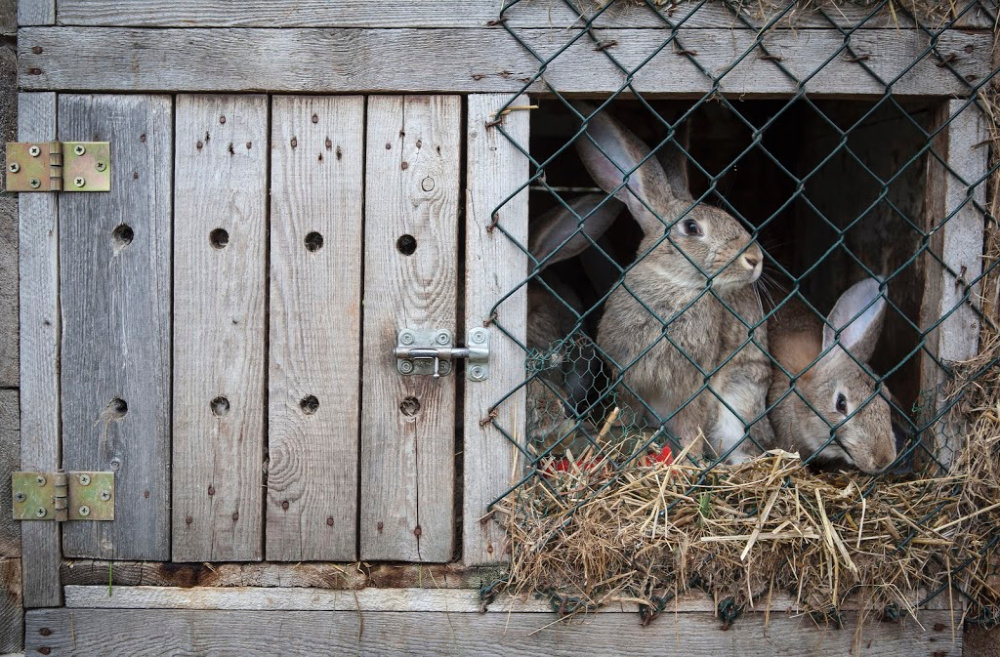
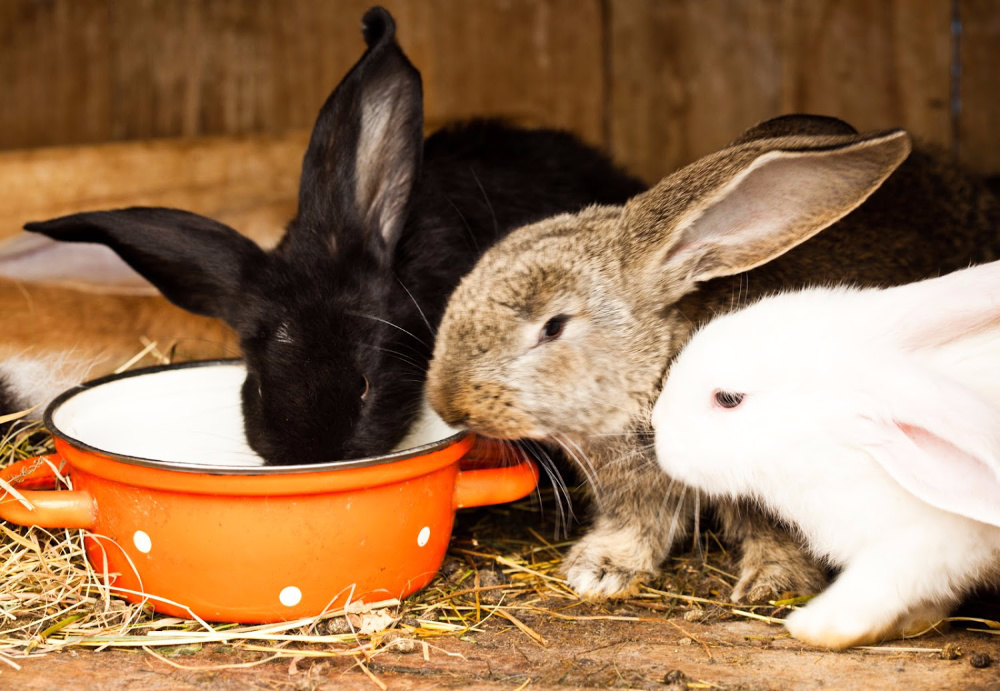
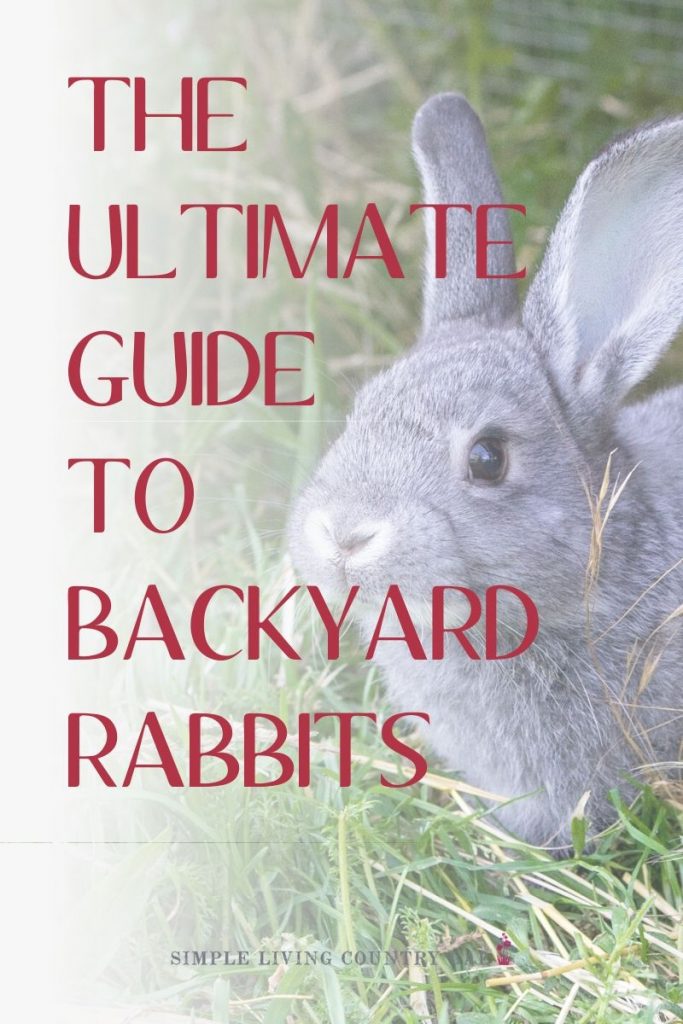
Thank you for a very informative read, I am in process of starting up as i have large paddocks to use it is very good information especially building the large cage under trees, and the use of Lavender etc thank you.